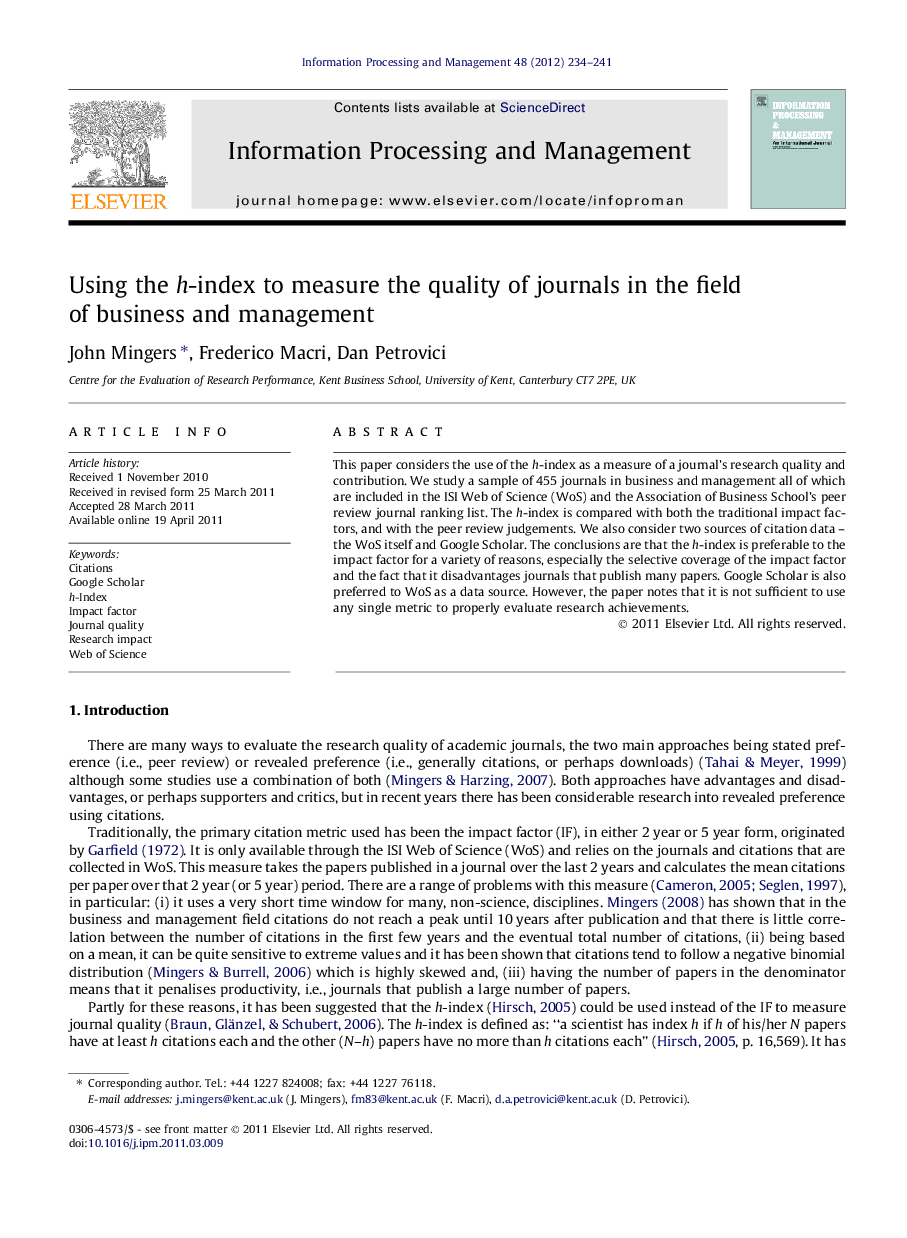| Article ID | Journal | Published Year | Pages | File Type |
|---|---|---|---|---|
| 515652 | Information Processing & Management | 2012 | 8 Pages |
This paper considers the use of the h-index as a measure of a journal’s research quality and contribution. We study a sample of 455 journals in business and management all of which are included in the ISI Web of Science (WoS) and the Association of Business School’s peer review journal ranking list. The h-index is compared with both the traditional impact factors, and with the peer review judgements. We also consider two sources of citation data – the WoS itself and Google Scholar. The conclusions are that the h-index is preferable to the impact factor for a variety of reasons, especially the selective coverage of the impact factor and the fact that it disadvantages journals that publish many papers. Google Scholar is also preferred to WoS as a data source. However, the paper notes that it is not sufficient to use any single metric to properly evaluate research achievements.
► The h-index is generally well correlated with the impact factor and with peer review evaluations. ► The h-index recognises both the impact of a journal and the number of papers published. ► The h-index measures citations over a longer period than the IF which is better for social science. ► h is robust, easily understood, and insensitive to very highly cited papers that skew the IF. ► h, used with Google Scholar, provides a metric that covers all journals equally in contrast to WoS.
